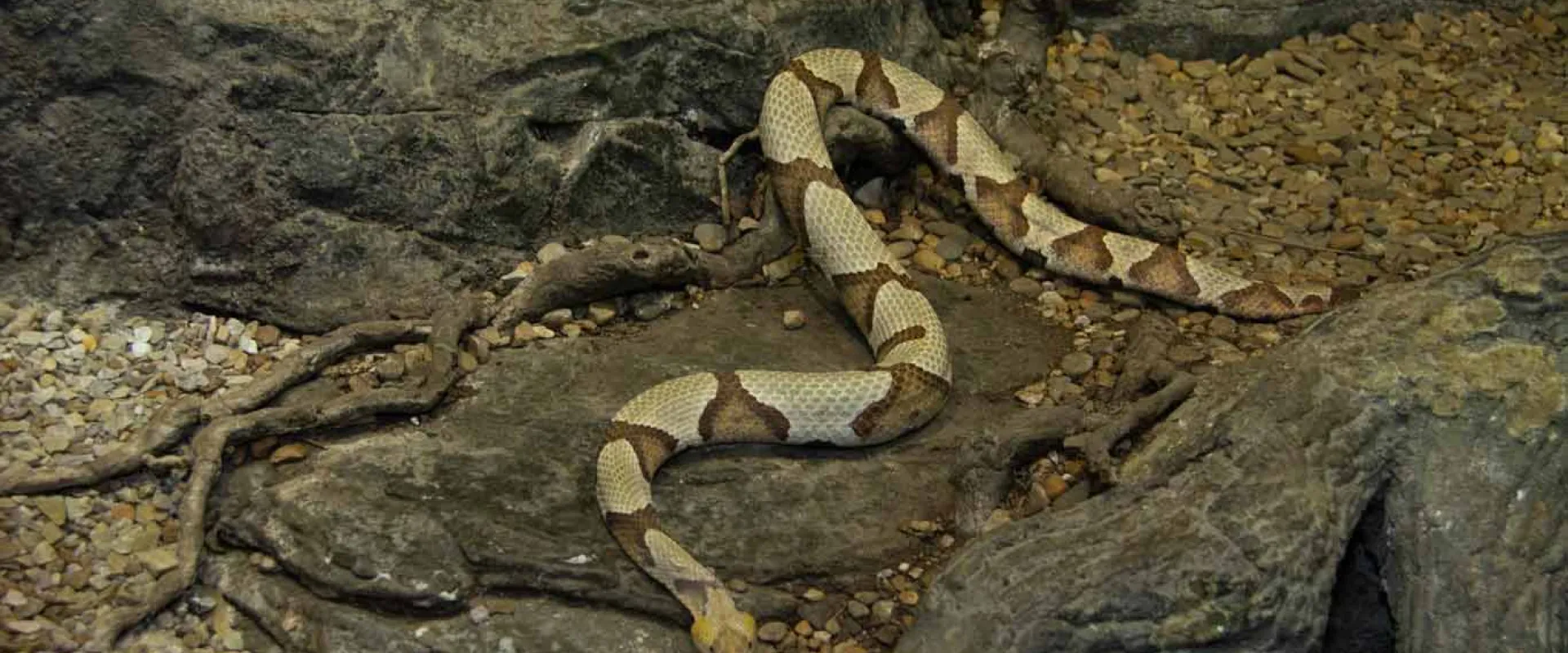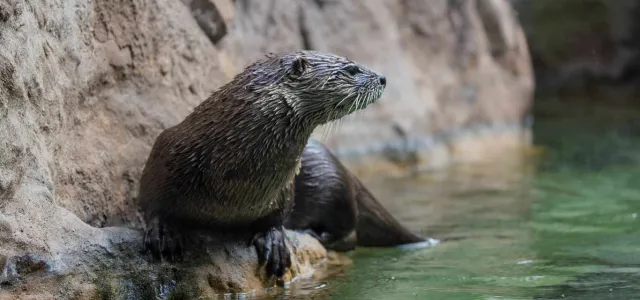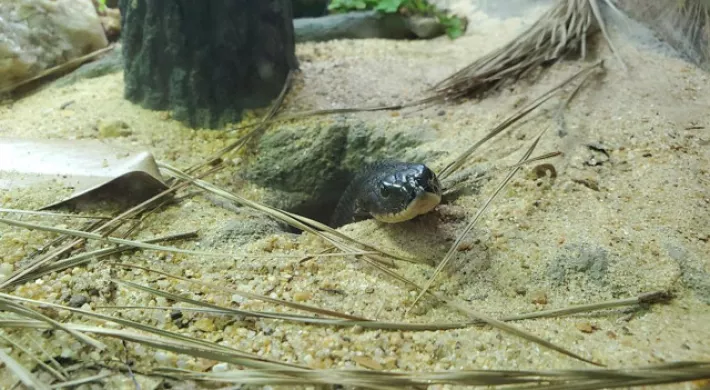Did you know copperhead venom has been studied and synthesized as a medicine to help treat pain and high blood pressure? Learn more about copperheads.
When most ambush predators like copperheads move, it’s to find hiding spots or areas to raise their body temperature. Several spots within the habitat allow the snake to feel hidden or to warm up and regulate its body temperature.
By marking snakes encountered on the North Carolina Zoo’s grounds, Zoo staff are learning valuable information about the status of our local snake population. In addition, snake research on site creates unique opportunities to teach visitors about the importance of these misunderstood but critical predators. Snakes are also tested for a fungal disease that is affecting an increasing number of wild snakes in North Carolina. You can read more about the Zoo’s work on wild snakes below, under related resources.
- Social in the winter, it is not uncommon for them to hibernate with other snakes through winter.
- Copperheads rely on their perfect camouflage as they lie in wait for prey to get close.
- Juveniles wiggle the bright yellow tip of their tail to attract prey.
- Extinct in Wild (EW)
- Critically Endangered (CR)
- Endangered (EN)
- Vulnerable (VU)
- Near Threatened (NT)
- Least Concern (LC)
- Not Evaluated (NE)



